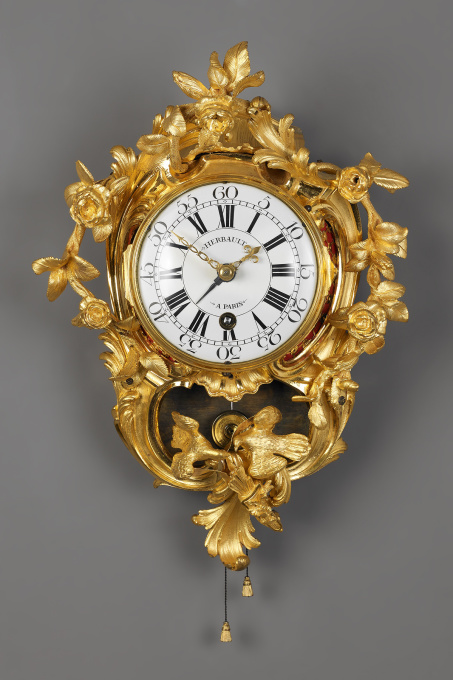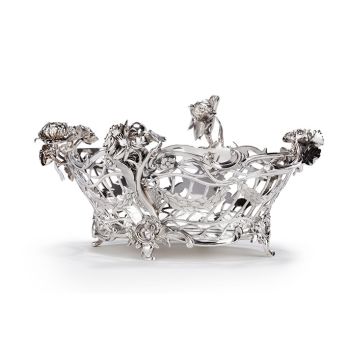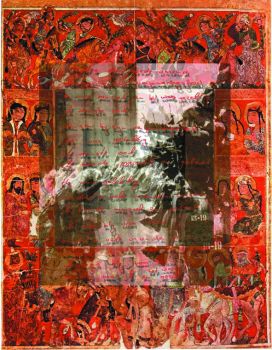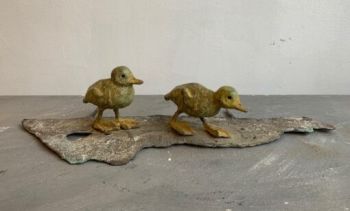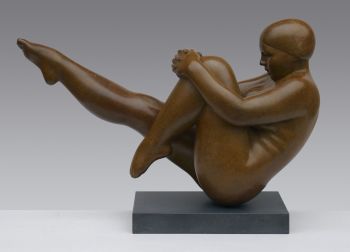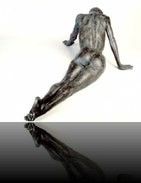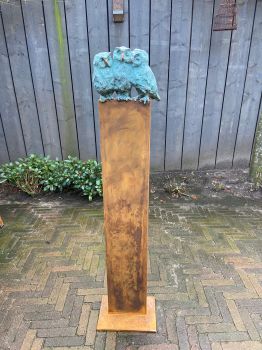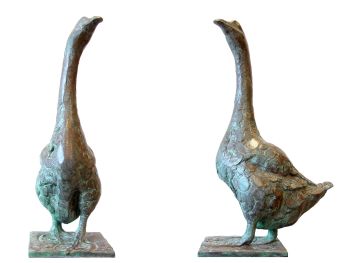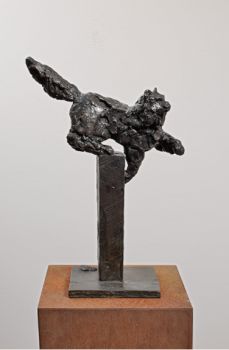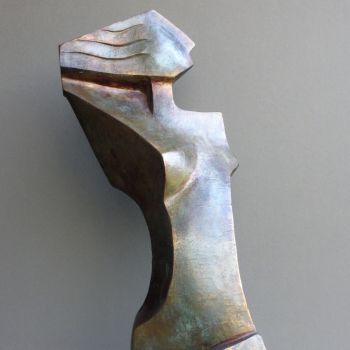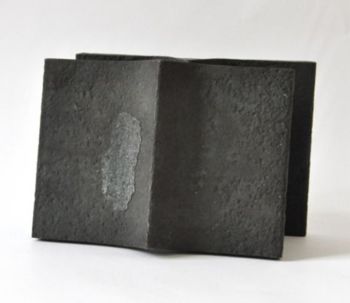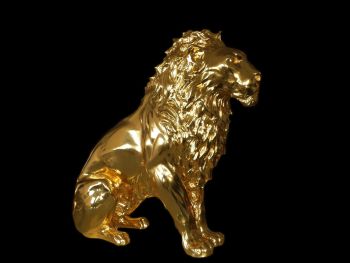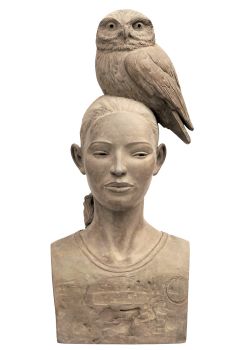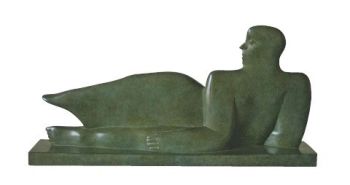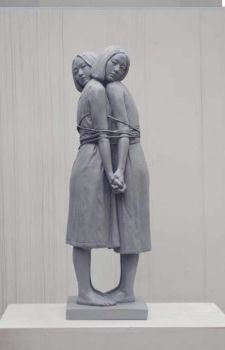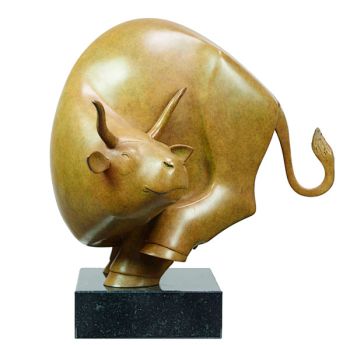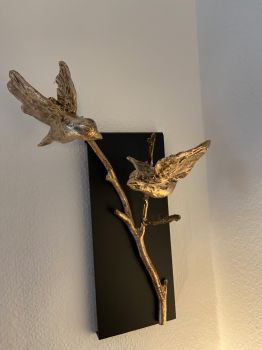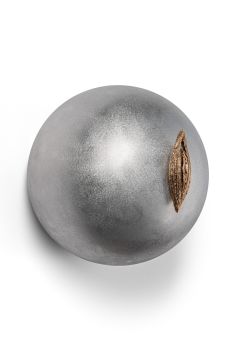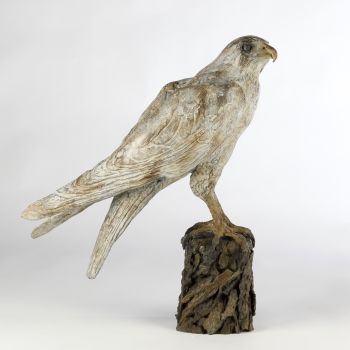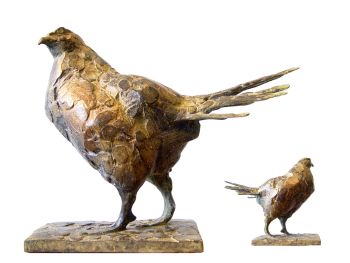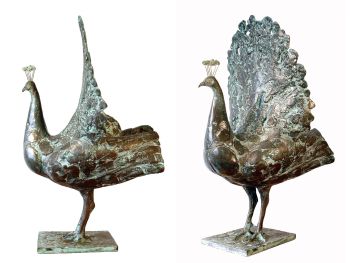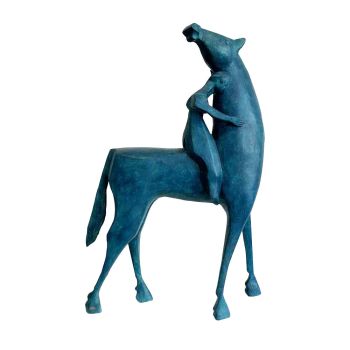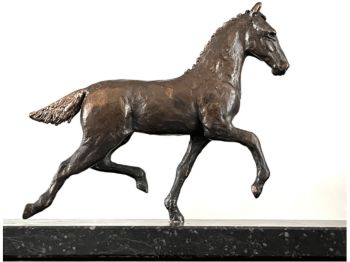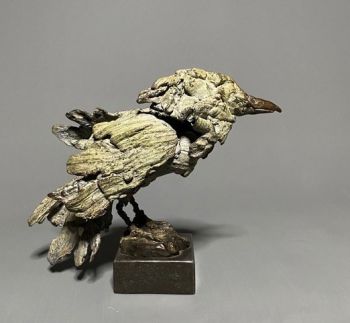A French Louis XV "Cartel d'Alcove" 1750
Louis-François Herbault
BronzeMetalEnamel
35 ⨯ 25 ⨯ 13 cm
Currently unavailable via Gallerease
- About the artworkA Cartel clock made by Louis-François Herbault, who became master clockmaker in 1743. He worked from the Quai Pelletier between 1744 and 1748 and later moved to the Rue de Grenelle Saint-Honoré between 1759 and 1789.
The clock is signed on the dial and on the clockwork: HERBAULT À PARIS
and bears the number: 264.
The clockwork has a three-week going train, a striking train on request, and an alarm. The striking train is operated with a cord. The white enamelled dial has Roman numerals to indicate the hours and Arabic numerals in the outer ring to indicate the minutes. The openwork hands are made of gilt bronze. The dial to set the alarm is made of blued steel.
The beautiful asymmetric gilt-bronze case is built up with flowery sprigs in the shape of a rose-bush. At the bottom two lovebirds have perched upon Amor’s quiver. The ensemble is a celebration of love. From the bottom up the branches are twining upwards around the dial to end in a crest of leaves and flowers. Behind the lovebirds there is an opening that shows the pendulum.
The case is an idiosyncratic example of the “style Rocaille”, which slightly differs from the sometimes exaggerating Rococo. The Rocaille is characterized by long undulating lines that look very natural. Often the lines consist of leaf and flower motives that culminate in an emphatic composition, like in this case the crest of leaves and flowers at the top. Although the details of objects made in the Rocaille style show a lot of asymmetry, the entities always have a balanced and natural appearance.
Provenance:
Private Collection Brussels - About the artistLouis-François Herbault is known as a French clockmaker. Herbault became a Maître in the year 1745. He became A juré in 1761, and Garde in 1769. His workshop was located on Quai Pelletier, 1744-1748 and the Rue de Grenelle St. Honoré, 1759-1789. Aside from clocks he also produced watches. One particular piece in gold and enamel is on display in the Victoria and Albert Museum in London. His work is signed HERBAULT A PARIS.
Artwork details
Category
Style
Material & Technique
Colour
Related artworks
Unknown artist
A Surinam-themed Amsterdam long-case clock1746 - 1756
Price on requestZebregs & Röell - Fine Art - Antiques
 Curated by
Curated byGallerease Magazine
1 - 4 / 17Unknown artist
AN IVORY NETSUKE OF A DUTCHMAN FROLICKING WITH A SMALL BOY18th century
Price on requestZebregs & Röell - Fine Art - Antiques
Unknown artist
A IVORY NETSUKE OF A DUTCHMAN HOLDING A COCKEREL18th century
Price on requestZebregs & Röell - Fine Art - Antiques
1 - 4 / 24- 1 - 4 / 24

